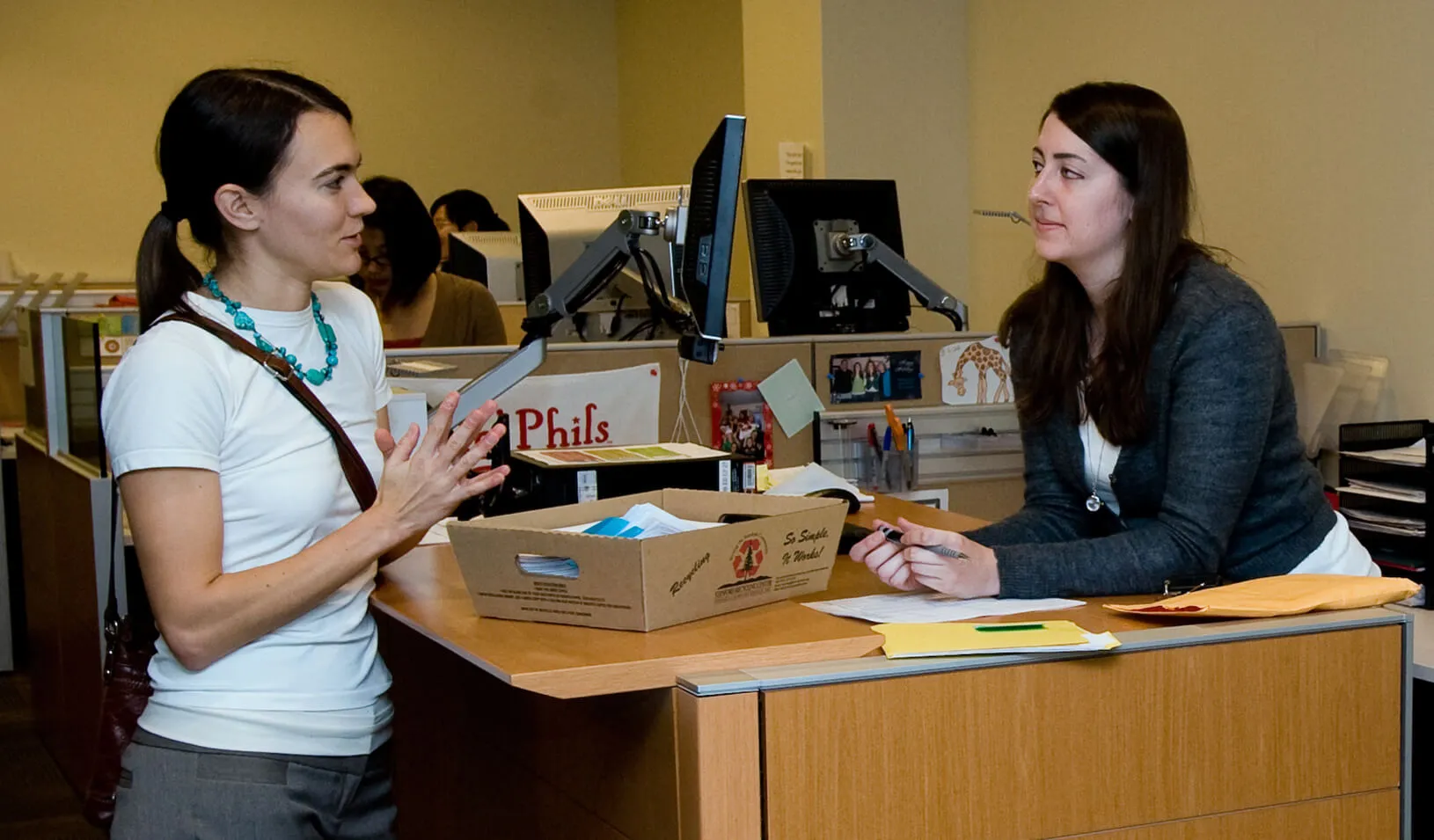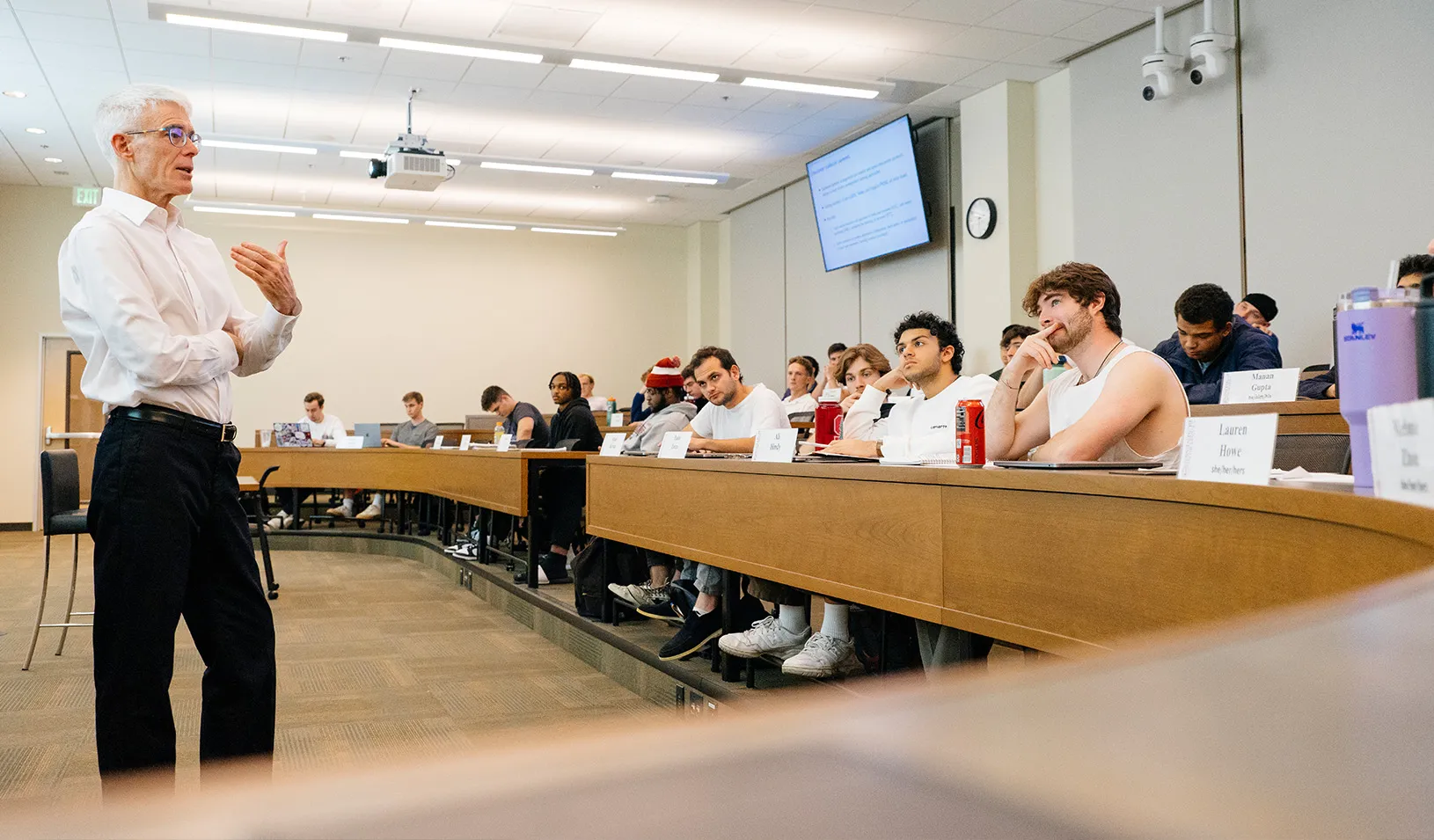The Human Factor
Stanford GSB’s underground Behavioral Lab brings to light new insights about human interactions.
January 30, 2018
One study at the Stanford Behavioral Lab found that whether or not participants followed a researcher in lockstep decided the fate of pill bugs down the hall. This information on synchronous activities could be meaningful in determining how businesses function. | Brett Amory
The task sounds like a no-brainer: Sit in front of a computer screen, a woman tells you, and follow the instructions as you participate in a quick quiz. The woman leaves. When you’re done, about 10 minutes later, you walk out with enough cash to buy a fancy coffee. Except before you leave, someone else comes into the room to ask you what color shirt the first woman was wearing: the entire point of the experiment.
Welcome to one of the most surprising (and well-hidden) places on the Stanford campus. In the windowless basement of the Patterson Building at the Graduate School of Business, the Behavioral Lab, or B-Lab, studies human subjects, helping faculty and PhD students design experiments that can fundamentally change the way that organizations — and the people who comprise them — behave and interact.
It’s a busy place. At any given time, faculty members and students are conducting no fewer than half a dozen experiments. In a single academic year, more than 7,000 study participants will filter through this basement, and more than a quarter-million will participate online.
The lab came to life in 1997, when Margaret Ann Neale — now the Adams Distinguished Professor of Management and the Robert and Marilyn Jaedicke Faculty Fellow for 2017-18 — was an associate dean. There were few behavioral labs at universities at the time, Neale says.
“It was clear to me that having this resource would substantially improve the quality of research possible for Stanford’s faculty and PhD students,” Neale says.
A Tool for the Faculty and the Broader Community
The administration agreed. Now, 20 years later, the research done at the Stanford Behavioral Lab has become not only an essential part of Stanford GSB, but also an essential part of the business world at large. Concepts like reciprocity, inequality, power, and even happiness are better-understood thanks to the work being done here.
“This lab exists for whatever the faculty is working on,” says Nicholas Hall, associate director at the Behavioral Lab.
This open-to-anything mentality has led to a few wonderful, albeit strange, experiments. For example: the famous pill-bug experiment, conducted in 2008-09 by postdoc researcher Scott Wiltermuth, PhD ’09 (now a professor of management and organization at the University of Southern California Marshall School of Business).
In the study, each participant was asked to follow an experimenter down a long hallway to a small room. There, he or she found cups filled with pill bugs, along with a coffee grinder. The task? Grind up the pill bugs. The experiment revealed that the people who were asked to follow the researcher in lockstep, rather than walk naturally, were willing to grind up more bugs — 54% more bugs, in fact.
“It was an ‘Are you kidding me?’ experiment,” Hall says.
(Don’t worry: The grinder had been disabled, and no bugs were harmed. After the experiment, the critters were dispersed to various lawns and bushes around campus to live out their lives.)
The seemingly peculiar experiment, which was designed to study a concept called synchrony, demonstrated that certain cultural practices can make people more likely to engage in destructive obedience at the behest of authority figures. These findings were the first to indicate that synchronous activities may be used to influence leader-follower relations, and they could have a great impact on how business organizations and corporations function.
How the Body Does Business
Here’s a more recent example of the work being done in the B-Lab: Neale and her team are currently studying the impact of hormones on negotiation. It’s a messy process. To measure their hormones, participants are asked to spit into test tubes before, during, and after a negotiation. As Neale puts it, “There’s a lot of spitting going on.”
During an academic year, more than 7,000 individuals come to this windowless basement to participate in studies; more than a quarter-million take part online. | Toni Bird
Neale is also conducting a series of studies on the physiology of negotiated outcomes. How well do people solve problems while walking? How are over-the-phone negotiations affected if one person is sitting at a desk and the other person is walking around? These experiments are still in progress; the results could offer us much deeper insights into the science of negotiation.
For her research, Neale says, the impact of the behavioral lab is “immeasurable.”
“The lab gives us real insight into [assessing experiments’] internal validity and what impacts what,” she says. “What we’ve done is create an environment that has really pushed forward my research and that of my colleagues here at Stanford.”
— Mary Duan
For media inquiries, visit the Newsroom.
Explore More
Back to Class: Pathfinder

Business, Government, and Society Forum Looks at New Demands on Leadership

Erin Nixon Joins Stanford GSB as Assistant Dean of Admissions
